
World’s most violent sport? Italy’s brutal 54-man game of football – the Calcio Storico Fiorentino
- Held annually in Florence, the Calcio Storico Fiorentino combines football, rugby, wrestling and bare-knuckle boxing in a 50-minute, no-holds-barred brawl
- Few tourists can be found among the 4,000 fanatical supporters, but it is easy to snap up a ticket to watch the event via online ticket sales
The scene resembles the awesome contests held 2,000 years ago in Rome’s Colosseum.
Fifty-four modern gladiators enter a sandy arena, most stripped to the waist to display bulging muscles, fearsome scars and warlike tattoos.
They are prepared for a no-holds-barred, 50-minute skirmish that combines the sports of football and rugby with the darker arts of wrestling, bare-knuckle street fighting and MMA combat.
But rather than ancient Rome, this is present-day Florence, and the day is June 24, a public holiday honouring the Italian city’s patron saint, San Giovanni.
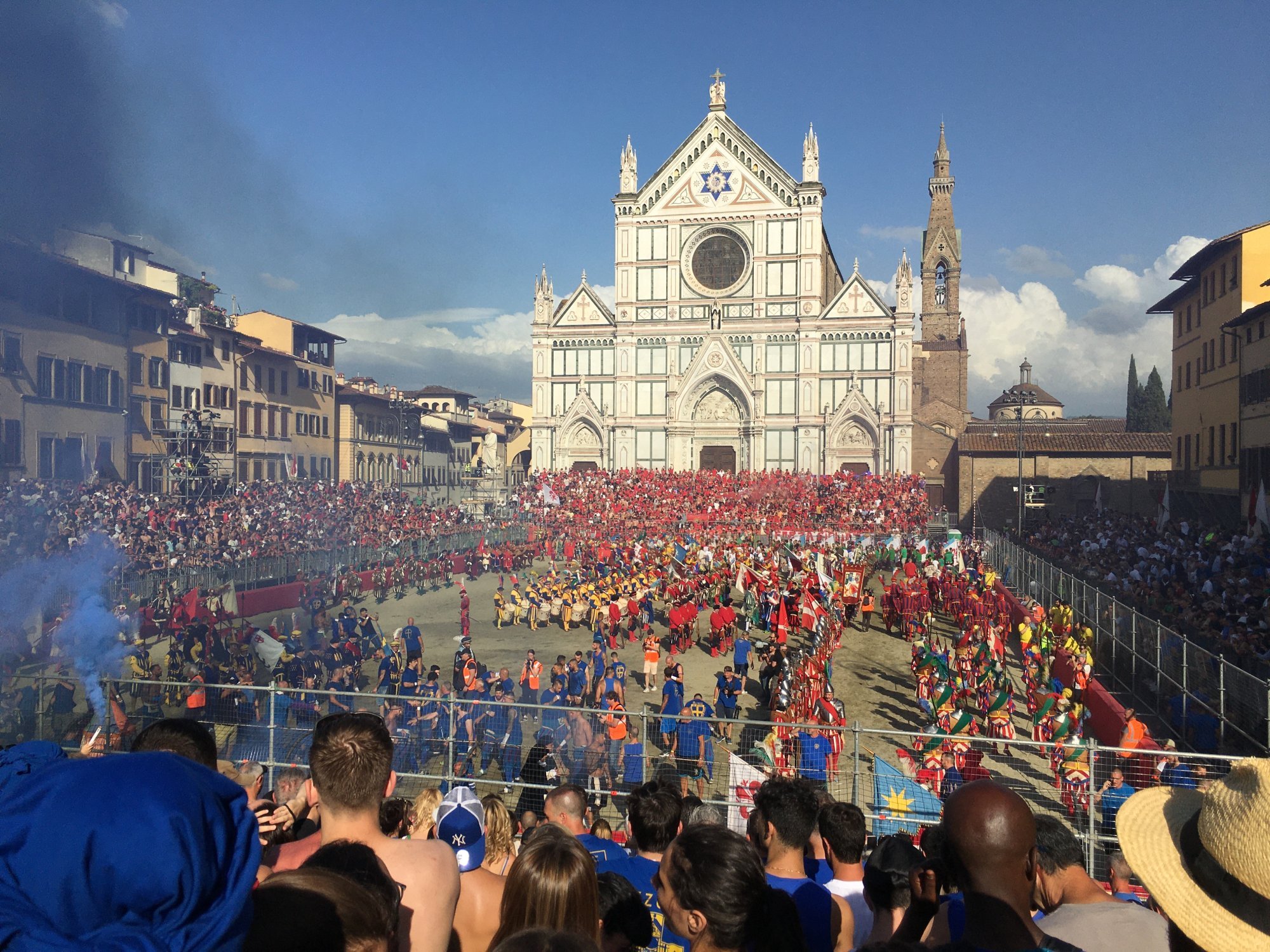
Any tourist planning to visit the otherwise romantic Piazza di Santa Croce on this day should be prepared for surprises. The sleepy square is emptied of tour groups and reclaimed by Florentines, who transform it into the seething venue of the annual Calcio Storico Fiorentino, or Giuoco del Calcio Fiorentino, a game of football dating back to the Middle Ages.
The Basilica of Santa Croce, the final resting place of Michelangelo, Machiavelli and Galileo, provides a magnificent backdrop, surrounded by three specially erected terraces packed to bursting with 4,000 frenzied supporters.
24 hours in Milan: coffee, shopping, Chinese food, churches and crystals
In the middle is a 100m by 50m (328ft by 164ft) dirt pitch on which two teams of 27 glaring, menacing calcianti face each other.
A cannon sounds, the ball is thrown into the air and the contest begins.
Although calcio storico (“historical football”) was initially created as a game for aristocrats, with formal rules set out in 1580 by Florentine count Giovanni de’Bardi, the game has been adapted over the centuries to represent the more inclusive identity of this unique city.

Four neighbourhood teams, identified by different colours, compete for victory: the Rossi (“reds”) of Santa Maria Novella; the Verdi (“greens”) of San Giovanni; Santa Croce’s Azzuri (“blues”); and, from the other bank of the Arno river, the Bianchi (“whites”) of Santo Spirito.
In total there are three matches: two semi-finals and the final.
Each team has a pool of 60-70 players, who train regularly throughout the year.
Each calcianti must have lived in the city for at least 10 years. They come from all walks of life: there are bakers, butchers and trattoria owners, and burly construction workers, but also hotel workers, architects and business executives.
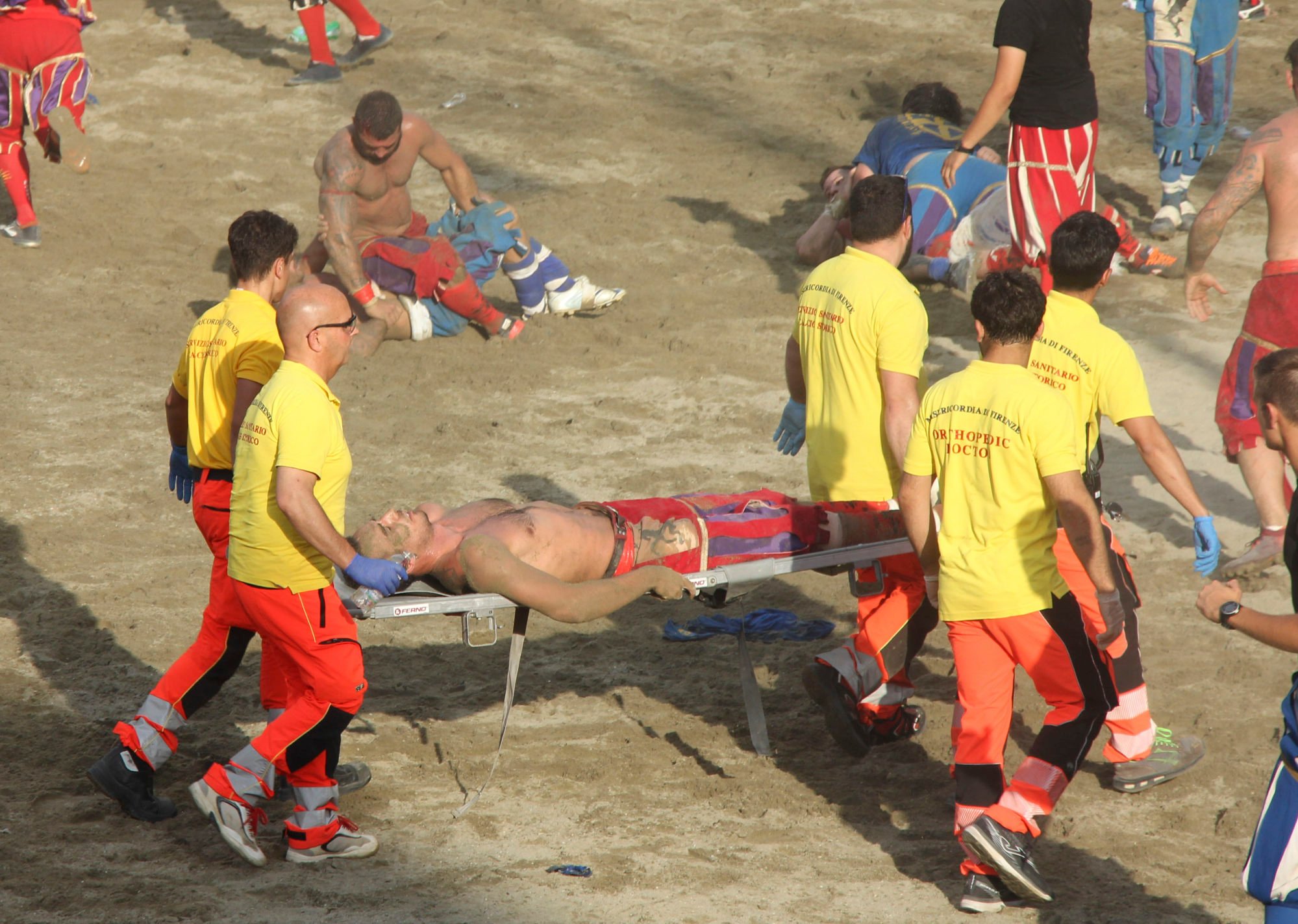
When witnessing the passion and brutality of these matches – not to mention the risk of serious injury – it seems incredible that the game is played for no medals, no shiny silver trophy, just the glory and pride of winning for your colour. And a huge party afterwards in whichever district has triumphed.
The festivities begin in the early afternoon, with a parade of all four teams through Florence’s historic centre, the narrow cobbled streets packed with supporters cheering on their heroes.
Once the crowds are settled on the Piazza Santa Croce’s makeshift terracing, a sumptuous costumed medieval pageant is acted out, with swirling flag throwers, military drummers and trooping pike soldiers.
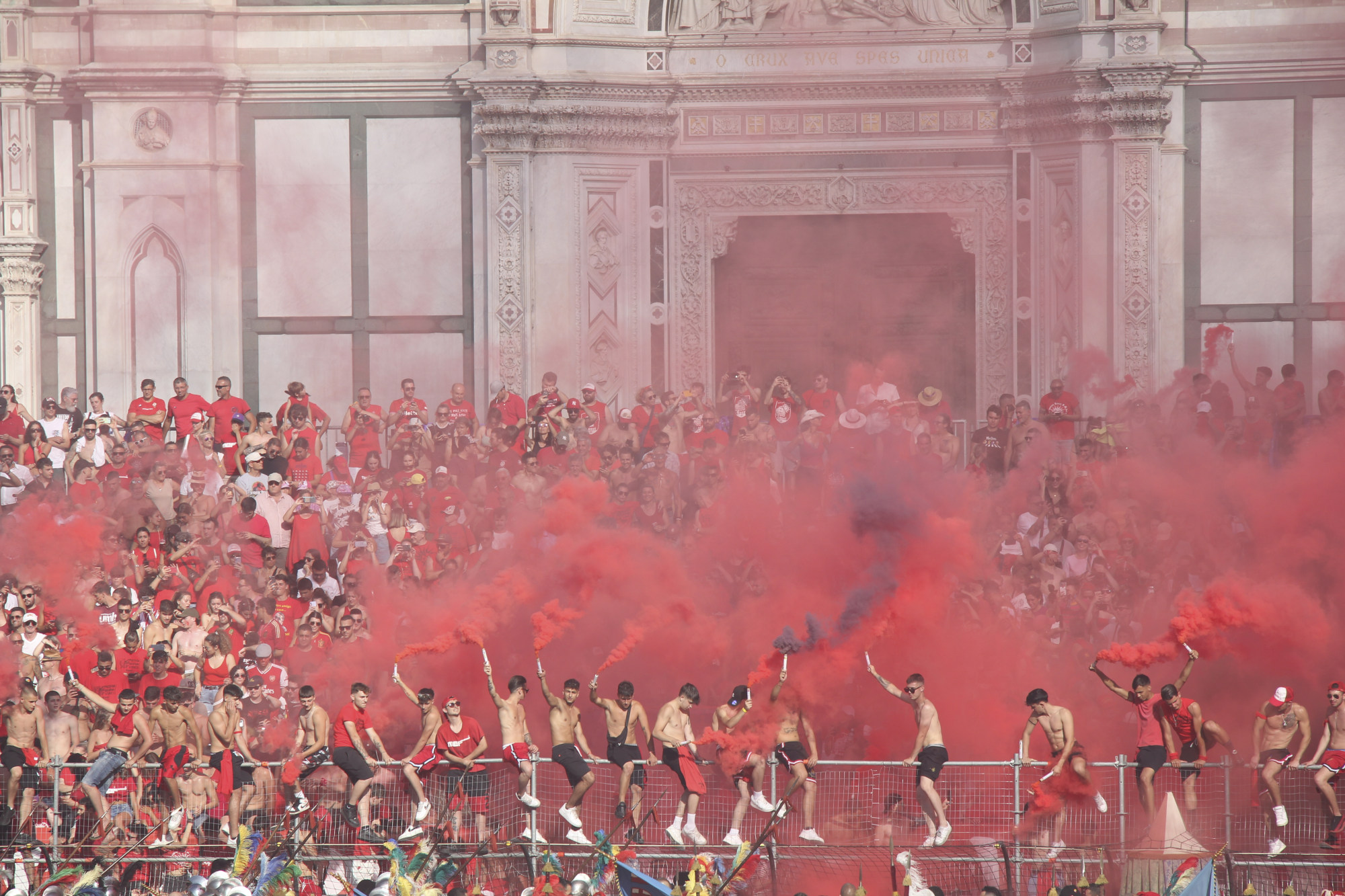
Suddenly the first two teams enter, huddle in a circle, then prowl round the pitch eyeing their opponents.
Posturing over, the 54 players line up face to face, the referee organises his six linesmen, and medics prepare to treat broken bones and concussion, stretchers at the ready for the seriously injured.
As the ball drops, chaos ensues.
Each team has 15 corridori (forwards), each of whom starts grappling with a chosen opponent – often personal rivalries are renewed annually – the aim being to pin him down to create space for an attack.
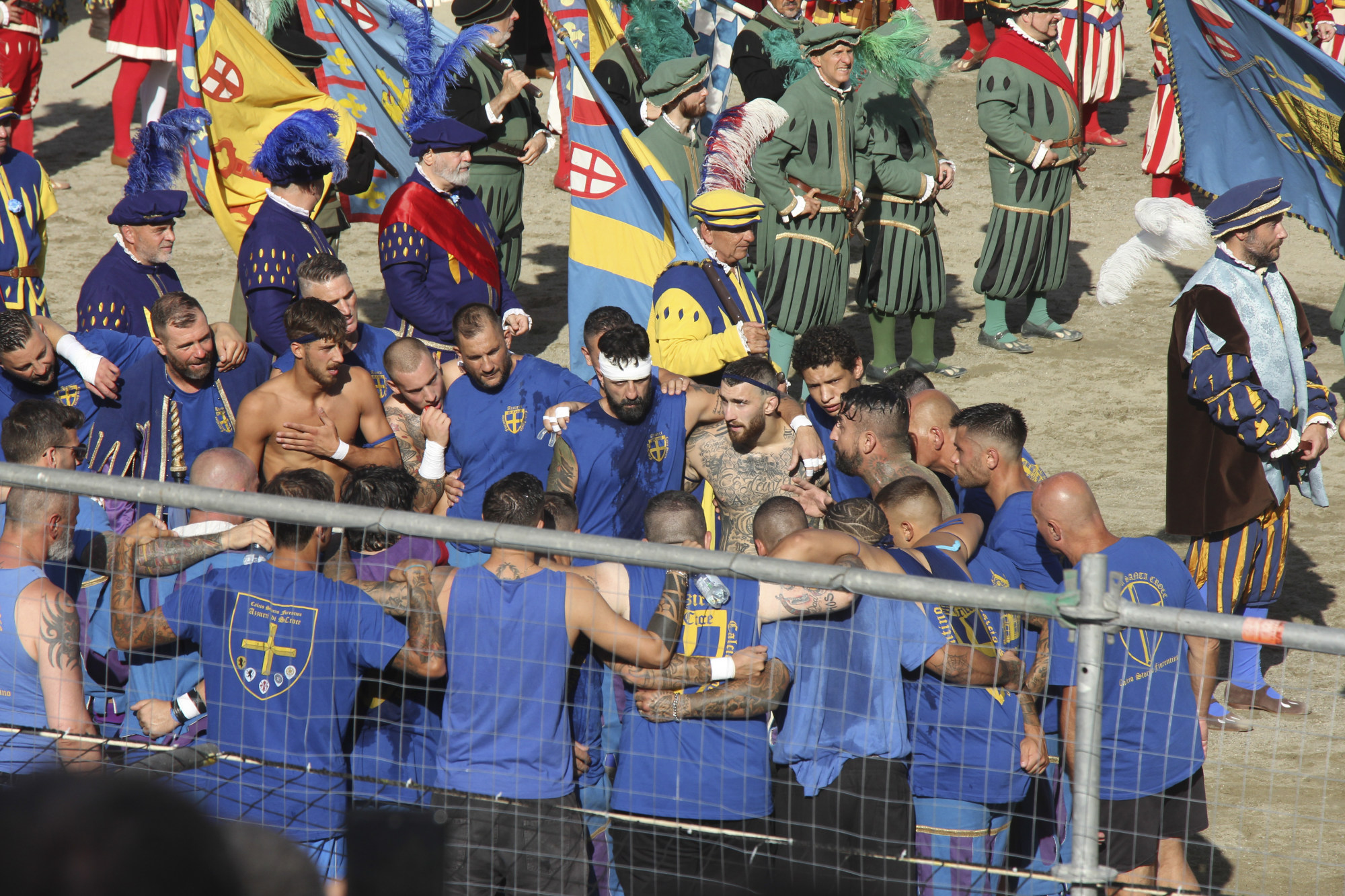
The rather limited fair-play rules forbid more than one player ganging up on an opponent, but everything else is allowed; punching, tripping, wrestling, elbowing, choking, headbutting.
If an opponent has to be carried off the field, so much the better, as no substitutions are permitted.
The moment enough opponents seem incapacitated, the ball is passed from the player who has been guarding it to the less muscle-bound runners, who pass and weave their way through the defending half backs and four goalkeepers towards the goal, each of which runs across the width of the pitch.
If the ball enters the net, a roar of “Caccia” (“goal”) erupts among supporters of the team that has scored. To make matters more complicated, if the ball goes above the net instead, then the opposing team is awarded a half caccia.
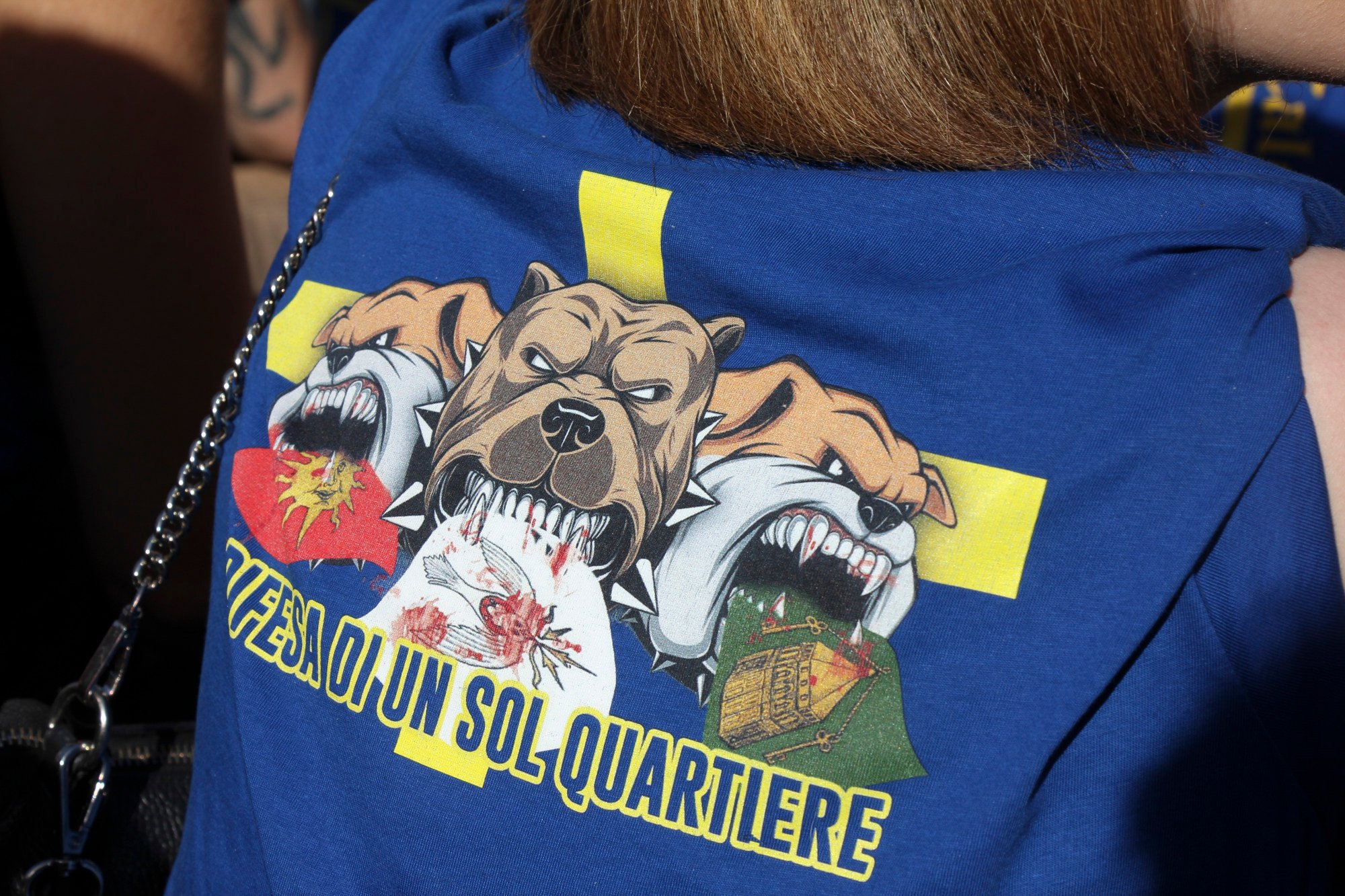
An overwhelming victory was seen in 2023’s final, the Rossi triumphing over the Azzuri by 9 cacce to 2, although the game had nearly been called off when a prematch brawl between opposing players gave the referee pause for thought.
Nevertheless, the violence stays on the pitch; walk into a local trattoria on the evening of June 24 and you are likely to come upon a table of calcianti from different neighbourhoods swapping calcio storico war stories over a bottle of Chianti and a traditional T-bone Bistecca alla Fiorentina – rare and bloody, of course!
On match days there are few tourists in sight among the fanatical supporters, but it is straightforward for anyone to snap up a ticket to watch the Giuco del Calcio Fiorentino, with online ticket sales for the two semi finals and grand final opening in early June.

